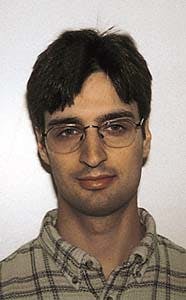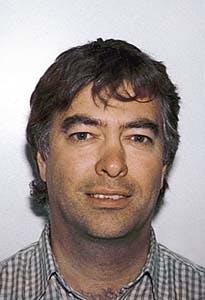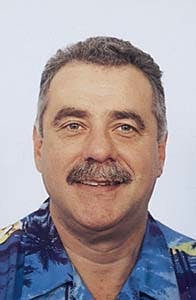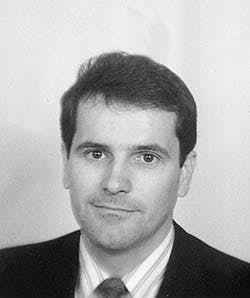Advanced control of hydrogen network reduces energy consumption
Michael Mastrogiacomo, Denis BilodeauPetro-Canada Products realized substantial energy savings by implementing advanced control of the hydrogen plant and hydrogen grid at its Montreal refinery.
Petro-Canada Products MontrealSteven Treiber, John Walker
Treiber Controls Inc. Toronto
The hydrogen grid supplies all the high-purity hydrogen used in the refinery. The two biggest hydrogen-consuming units are an Isomax unit (a UOP hydrocracking process) and a Canmet unit (a resid catalytic cracking process that feeds visbreaker vacuum bottoms). Other hydrogen consumers are a hydrodealkylation (HDA) unit and naphtha and distillate hydrotreaters.
The energy savings from advanced control of the hydrogen unit and grid have been audited at $4,500 (Can.)/day. The results presented in this article combine the energy credits achieved to date for both the grid and the hydrogen plant Optimum Predictive Control (OPC) applications.
The project was commissioned in the Foxboro I/A control system in July 1996, and has since achieved a combined service factor of more than 94%. The OPC technology has been described in a number of previous publications.1-3 This article will focus on the benefits of implementing the technology, and how those benefits were achieved.
The hydrogen grid
Petro-Canada's Montreal refinery is a 105,000 b/d, high-conversion refinery that produces fuels, aromatics, and asphalt. The refinery has two crude units and four conversion units: a 19,000 b/d total-resid cracker; an 18,000 b/d Isomax unit; a 14,000 b/d visbreaker; and a 5,000 b/d Canmet resid cracker.The site has two catalytic reformers: a 20,000 b/d Exxon Powerformer and a 12,000 b/d UOP Platformer. The aromatics facilities include a UOP Sulfolane extraction unit, an HDA unit, and a benzene/toluene/
xylenes (BTX) fractionation train, including ortho-xylene facilities.
This high-conversion refinery upgrades heavy, high-sulfur crudes to high-value fuel, distillate, and aromatic products. The majority of the refinery desulfurization occurs in the Isomax unit, which consumes as much as 60 MMscfd of pure hydrogen.
The hydrogen plant, or steam methane reformer (SMR), reforms the hydrogen molecules in paraffinic feeds. Additional hydrogen is recovered from the Powerformer offgas stream.
Process description
High-purity hydrogen is recovered from the Powerformer, Platformer, and HDA offgases either via pressure swing adsorption (PSA) or from the feedgas bypass flow around the SMR, known as "jumpover" (Fig. 1 [27,331 bytes]). Hydrogen is synthesized in the SMR; hydrogen in the feed to the SMR undergoes no reaction.The SMR furnace has a fired duty of 240 MMBTU/hr, and is a dominant energy-consumer in the refinery. This unit is at the heart of the hydrogen grid, which provides high-purity hydrogen, nominally at 95% purity, to all hydrogen consumers.
The objective of the advanced controls is to maximize hydrogen recovery and minimize hydrogen production via reforming while honoring all process and mechanical constraints. This saves energy by reducing throughput in the SMR, the refinery's biggest energy consumer.
Advanced control
In order to maximize hydrogen recovery, the control scheme must maximize PSA charge and jumpover flow (Fig. 1). To minimize reforming, it is necessary to minimize the SMR charge rate, steam-to-carbon ratio of the SMR feed, furnace-coil outlet temperature, Isomax recycle purity, and excess furnace oxygen.The control application was split between two multivariable controllers. The first controls the hydrogen grid and contains 5 manipulated variables, 2 feed-forward variables, 5 controlled variables, and 25 constraints.
The hydrogen grid has many modes of operation, so the controller was designed to accommodate all possible operating scenarios. To adapt the control scheme to the various operating modes, an external program was developed which executed before the OPC application. This code turns constraints off or on, depending on the grid operating configuration.
Key process constraints maintain the pressure balance in the hydrogen grid. For example, if without advanced control the feed side of the grid is overpressurized, gas is vented to either the fuel gas or flare system. With advanced control, the controller reduces the SMR production rate to maintain pressure balance.
The second application controls the hydrogen plant. This controller maintains the steam-to-carbon ratio, controls the Isomax recycle purity, and adjusts the circulation rates in the absorber-stripper.
Benefits
A post-commissioning analysis was conducted on daily operating data collected between July 23, 1996, and Oct. 14, 1996. These data were compared to "open loop" plant operation data collected from Apr. 4, 1995, to June 10, 1995.For the periods studied, the application increased hydrogen recovery from 23% of total hydrogen production to 38% of total hydrogen make. This means that there has been a major reduction in energy consumption for the same hydrogen output.
To calculate the benefits of the application, Petro-Canada used the following equation to measure hydrogen production: H2 make per unit fuel consumption is equal to total H2 production (on a pure basis) divided by the sum of SMR fuel gas flow and natural gas flow.
Hydrogen make per unit fuel has increased by 1.25 scf/scf. Based on the period analyzed, annual benefits are calculated to be $1.4 million (Can.), or $4,500 (Can.)/day.
Fig. 2 [31,753 bytes] shows total hydrogen production (recovery plus reforming) plotted against fuel gas consumption (refinery fuel gas plus natural gas). The majority of the benefits illustrated by Fig. 2 arise from shifting hydrogen production from reforming (SMR) to recovery (PSA + jumpover).
Additional objectives
In addition to minimizing reforming, the advanced control application also must reduce the steam-to-carbon ratio of the SMR feed, the furnace coil outlet temperature (COT), the Isomax recycle purity, and the excess furnace oxygen. Implementation of the control scheme has resulted in the following percentage changes in these parameters:- Steam per H2 make, -25.1%
- Recycle purity, -1.6%
- COT, +1.7%
- Excess oxygen, -35.0%.
The current target for the Isomax recycle purity is about 80%. The advanced control application adjusts the reformer COT to achieve the desired hydrogen-recycle purity. The application keeps the recycle purity at a safe limit.
The recycle purity is an indirect measure of the hydrogen partial pressure in the reactor circuit. It is influenced by many factors, including: Isomax charge rate, Isomax feed composition, reactor weighted average bed temperature, and hydrogen available for cracking. Control of the recycle purity is important to maintaining catalyst run length.
The SMR furnace COTs are manipulated to control C1 conversion and Isomax recycle purity. The 1.7% increase in the SMR COTs reflects an increase in the carbon number of the reformer feed (a reduction in the H2 content of the feed). This has occurred because the controller has shifted the H2-rich feed gas to the PSA and to the jumpover.
The excess oxygen has decreased primarily because of repairs made to the furnace. Tubes were replaced, and the fire boxes were sealed. New instrumentation (draft and O2 measurements) were added, and these loops were closed in the OPC application. The variability in the O2 measurement was reduced 35% with the addition of advanced control.
References
- Singh, S.P., and Kloefkorn, B.K., "Mobil's Experience in Implementing Model Based Multivariable Control in the TDC3000AM Using Treiber Controls' OPC Software," Honeywell IAC Users' Group Symposium, June 1994, Phoenix.
- Treiber, S.S., Walker, J.C., and de Trembley, M., "Optimize Control of Natural Gas Plants," Hydrocarbon Processing, April 1994.
- Collins, K., Treiber, S.S., and Walker, J.C., "Multivariable control benefits Alberta plant," OGJ, May 7, 1997, p. 118.
The Authors
Michael Mastrogiacomo is an applications engineer at Petro-Canada Products' Montreal refinery. He has been involved in process engineering, distributed control system implementation, plant information systems, and advanced process control. He has a BE in chemical engineering from McGill University.
Denis Bilodeau is an automation group leader at Petro-Canada's Montreal refinery. Before taking his current position, he was a process engineer for 7 years, then a process supervisor for 8 years. He has a BS in chemical engineering from Laval University, Quebec City.
Steven Treiber is president of Treiber Controls Inc., Toronto. Before forming Treiber Controls in 1984, he worked in the pulp and paper industry in the U.S. and Sweden, then for Shell Canada Ltd. He has a PhD in chemical engineering, specializing in process control, from McGill University.
John Walker is an applications engineer with Treiber Controls. Before joining Treiber, he was employed by Imperial Oil and Shell. He has bachelors and masters degrees from the University of Toronto.
Copyright 1997 Oil & Gas Journal. All Rights Reserved.




